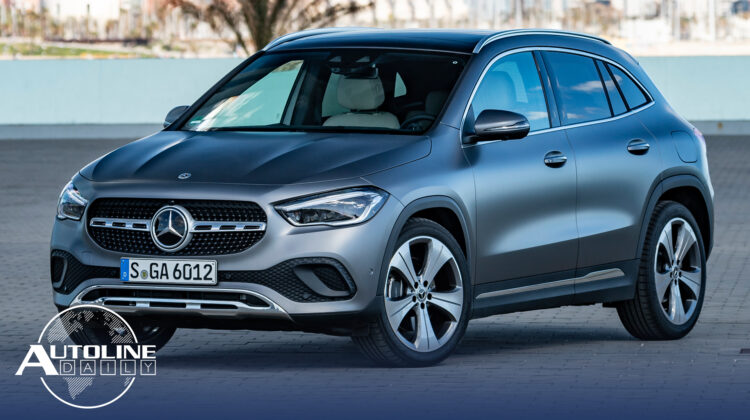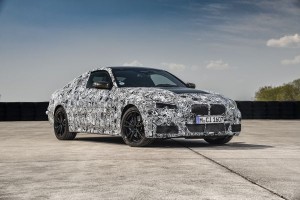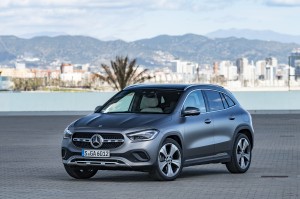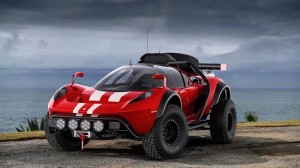
Listen to “AD #2826 – New Mercedes GLA Highlights; Lincoln Axes Rivian-Based Electric SUV; Should Ford Consider a Merger?” on Spreaker.
Follow us on social media:
Runtime: 11:20
0:07 BMW Finishing Up Tests on New 4 Series Coupe
1:00 Highlights of Mercedes’ New GLA
2:01 Autonomous Shuttles Turned into Pizza Delivery Vehicles
2:40 Glickenhaus to Offer Porsche-Inspired Buggy Kit Car
3:06 Infiniti Invents ‘Carigami’ to Pass the Time
3:55 Dealers Reluctant to Stock Used Inventory
4:44 Lincoln Axes Rivian-Based Electric SUV
5:09 Ford Delays Autonomous Vehicle Service
5:35 Automakers Still Burning Through $1 Billion a Week
6:07 Analyst Says Ford Should Consider a Merger
6:26 Should Automakers Merge or Merge Operations?
7:40 Elon Musk Ready to See Quarantine End
8:04 Why Tesla’s Gigafactory is the Biggest
Visit our sponsor to thank them for their support of Autoline Daily: Bridgestone.
This is Autoline Daily, the show dedicated to enthusiasts of the global automotive industry.
There’s plenty of coronavirus news for us to cover, and we’ll get to it. But we start out today’s show with a focus on product and technology.
BMW FINISHING TESTING ON NEW 4 SERIES COUPE
We start in Germany where BMW is running the 4 Series Coupe through its final phase of dynamic testing. The sporty two-door already went through rigorous winter tests in Sweden and tracks, including the Nurburgring. Now engineers want to see how it performs in normal driving conditions. They’ll do their final chassis tuning on highways and roads near the BMW’s test center in Munich. The 4 Series Coupe will feature an M version at the top of its lineup. It’s powered by an inline six-cylinder engine which is mated to an 8-speed automatic transmission. It also features a 48V mild-hybrid which will not only improve fuel economy, it will help improve acceleration off the line.
NEW MERCEDES GLA HIGHLIGHTS
And BMW’s greatest rival Mercedes-Benz revealed more details about the new GLA. Here are the highlights. It’s a little taller and a little shorter than the outgoing model, and passengers will sit up higher as well. The interior has three display screen options: two 7-inch displays, one 7-inch and one 10.25 inch or two 10.25 inch displays. There will be a range of gasoline and diesel engines with the highest output currently rated at 225 horsepower. They can be mated to either a 7- or 8-speed DCT as come with front- or all-wheel drive. All-wheel drive models come standard with an off-road package that includes unique lighting, an additional drive mode, special view from the display screen and hill descent control. The new GLA is scheduled to launch in Europe at the end of this month, followed by the U.S. and China.
AUTONOMOUS SHUTTLES TURNED INTO PIZZA DELIVERY VEHICLES
Now to Florida, where the mobility company Beep came up with a unique way to use its fleet of autonomous shuttles. Since no one is signing up for rides right now, Beep is using its vehicles to deliver pizzas to health professionals at a medical center in Orlando. After the pizzas are cooked, each box is sealed, loaded on cart, put into the shuttle and taken over to the medical center where workers can roll the cart right into the building. And Beep is not just delivering pizzas with its fleet of autonomous shuttles. It’s also been using them to deliver medical supplies and transfer COVID-19 tests.
GLICKENHAUS TO OFFER PORSCHE-INSPIRED BAJA BUGGY KIT CAR
Scuderia Cameron Glickenhaus, which is known for making really fast and really expensive sports cars, could come out with a kit car. It showed this off-road, baja-like buggy whose design is inspired by Porsche 959 rally cars. The company also makes another buggy, called the Boot, but wanted something smaller and more affordable. This so-called ‘mini Boot’ kit car would fill that gap.
INFINITI INTRODUCES ‘CARIGAMI’ TO PASS THE TIME
Every automaker seems to be coming up with coloring books for kids to use while they’re quarantined at home. But Infiniti decided to do something different. It’s giving you the opportunity to create origami-like designs of some of its vehicles, which it’s calling “Carigami.” The templates can be downloaded at Infiniti.com and then you just print them out and assemble them using a knife and glue. Three models are currently available, the Q50, QX80 and FX crossover but more will be added in the future.
The financial situation at Volkswagen and Daimler is bad. So much so that the automakers are practically begging the German government to get sales going again, probably with buyer incentives. In the U.S. dealers are reluctant to stock their used car lots with more cars because sales are so slow. Wholesale prices dropped 16% earlier this month so dealers are selling off what they have now and waiting for things to turn around. The good news is it might not take long. J.D. Power predicts wholesale prices will be down through June before improving dramatically.
LINCOLN AXES RIVIAN-BASED ELECTRIC SUV
Volkswagen and Ford reported dismal earnings for the first quarter. No surprise there. And they both warned that their business is going to get worse. Ford announced it’s going to drop a plan for Rivian to make a luxurious electric Lincoln SUV. But that project was going to eat half a billion dollars and so it got the axe. Remember the clip we played yesterday from our interview with Matteo Fini from IHS Markit, who said that vehicles that aren’t very far in the development process are the most likely to get cut.
FORD DELAYS AUTONOMOUS VEHICLE SERVICE
Ford is also going to delay its autonomous vehicle service by a year, although we wouldn’t be surprised if it announces another delay further down the road. And we have to wonder if Ford will think about stopping its rehab of a glorious historic train station in Detroit, which was going to become the center of development for its mobility services. It’s estimated Ford was spending over $1 billion to restore the building.
AUTOMAKERS STILL BURNING THROUGH $1 BILLION A WEEK
Before the crisis hit large automakers would typically burn through about $2 billion in cash every week. Now they’ve slashed their spending to the bone, but they’re still burning through prodigious amounts of cash. One analyst firm, Morningstar Research, estimates GM and Ford are burning through $130 million to $150 million a day. That’s around a billion a week. And unless they start to get revenue coming in the door, they’ll be out of cash before the end of the year.
ANALYST SAYS ITS TIME FOR FORD TO CONSIDER A MERGER
Adam Jonas, the well known automotive analyst with Morgan Stanley says it’s time for Ford to seriously consider consolidating or merging with another automaker, like Volkswagen. He even suggests that Ford should think about exiting the European and Chinese markets.
SHOULD COMPANIES MERGE OR MERGE OPERATIONS?
Here’s my Autoline Insight. I have a different idea than Adam Jonas. Before Ford thinks about merging with another car company, it ought to consider merging its powertrain operations with General Motors, and maybe even FCA. Collectively, the three of them make 20 million engines a year, and 20 million transmissions. And 90% of that production overlaps, meaning they all make engines with the displacement, and transmissions with the same number of gears. And yet, with the exception of some iconic engines, like the Hemi, GM’s LS2 or Ford’s 5-liter, most customers don’t even know what they have under the hood of their car. So why not eliminate all that duplication? Even though piston engines will be around for decades, everyone knows that the future is electric. By merging their powertrain operations GM, Ford and FCA could save billions.
So what do you think? Should car companies merge with one another, or simply merge operations where the vast majority of customers would never even know the difference?
ELON MUSK READY FOR QUARANTINES TO END
First he tweeted out “Give people their freedom back.” Later he tweeted his support for Texas for allowing businesses to reopen. Then tweeted out “Free America Now.” Sure sounds like President Trump, right? But it’s not. It’s Elon Musk, who wants to see the quarantines and stay at home guidelines come to an end right now.
WHY TESLA’S GIGAFACTORY IS THE BIGGEST
Tesla likes to brag that its Gigafactory is the biggest battery factory in the world. And it’s true. No one else has built one that large, and there’s a reason. It all has to do with safety. On Autoline After Hours last week Bob Galyen, who was the CTO at CATL, which is the world’s largest EV battery manufacturer, explained why they never built a plant as large as Tesla’s Gigafactory.
Bob Galyen, Galyen Energy LLC
“We don’t build what you would term a huge Gigafactory. Why? In Chinese law there is a requirement for fire egress every 60 meters in the building. In the United States it’s greater than that. And I’m not throwing rocks at our own people for not having rigorous safety protocols, but if you’ve ever been involved in an industrial fire, which I have unfortunately been involved in in the past, you want to get out of that place as fast as you can. Chemicals that are used in battery manufacturing are typically what you would call nocuous materials, or noxious materials. And of course getting out as quickly as possible is of paramount importance. If you build too big of a factory, we have a lot of people who cannot run 100 or 150 yards to save their own life because they’re not in good physical condition. Therefore if you build a factory that is too big, human beings cannot escape. Therefore, all the plants I’ve been involved in with design reviews and built in China, have been built such that we have a certain amount of a gigawatts worth of capacity, and there’s separation of the buildings. The physical separation of the buildings is filled with thick concrete. Because if you have to bring in a snorkel truck, the typical 100-foot aerial ladder truck, you deploy the side pods on that thing so that you get stability, you can pick people off the top of the roof or break out the windows to extricate them from the hallways that go around the outer perimeter. Some factories don’t do that. And I’m not going to mention other factories here in the United States that don’t do that, but it wouldn’t take too much investigation to find out who those are. My whole point to that is safety is Number One, whether that is in product design or whether it’s in taking care of the health and safety of the people who are in the factories that build these products.”
Bob Galyen shared a ton of knowledge about batteries and future applications and you can watch that entire show right now on our website or YouTube channel.
And with that we wrap up today’s report, please join us again tomorrow.
Thanks to our partner for embedding Autoline Daily on its website: WardsAuto.com

John McElroy is an influential thought leader in the automotive industry. He is a journalist, lecturer, commentator and entrepreneur. He created “Autoline Daily,” the first industry webcast of industry news and analysis.









